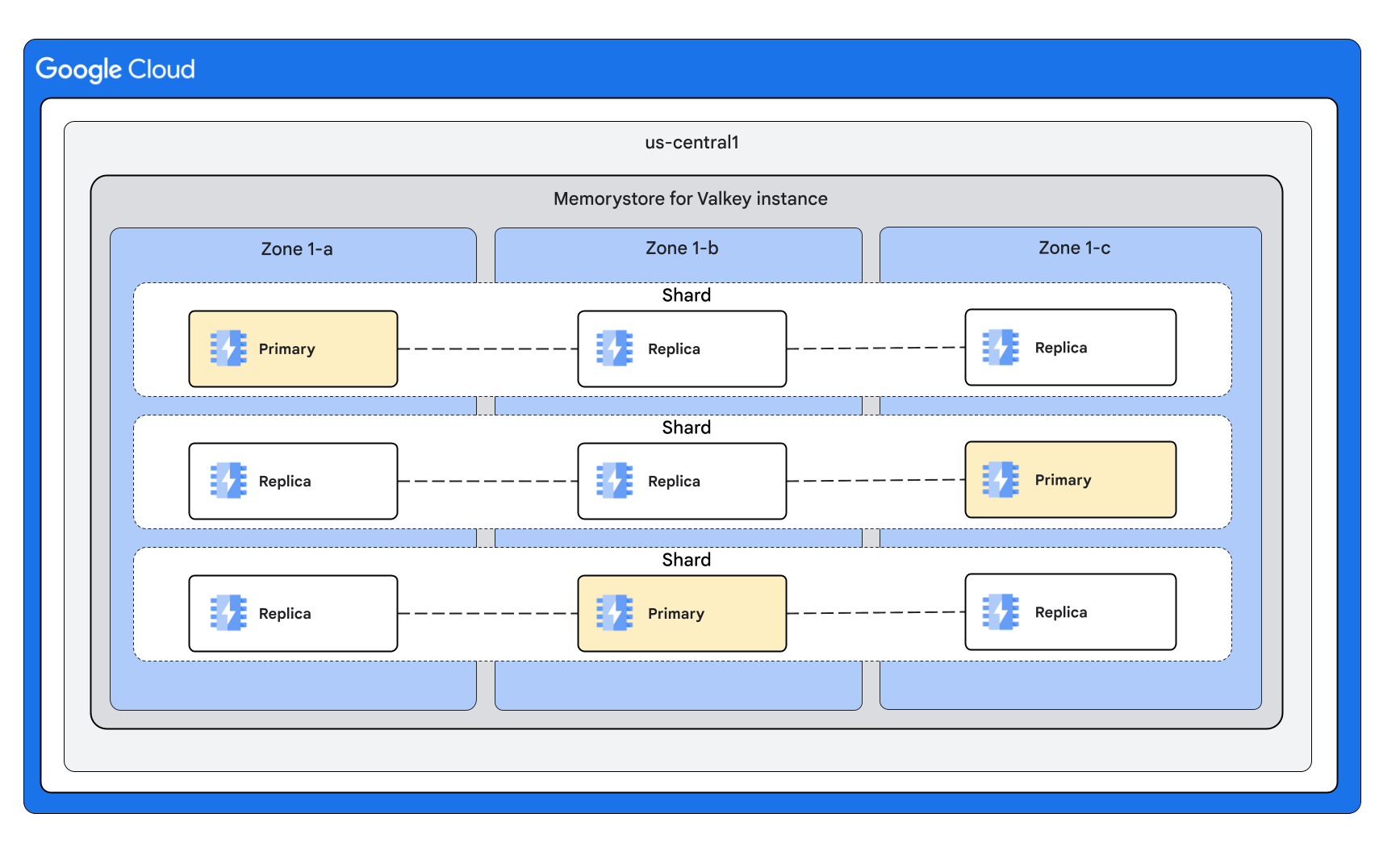Memorystore for Valkey 是一项全代管式 Valkey 服务, Google Cloud 支持已启用集群模式的实例和已停用集群模式的实例。通过利用高伸缩能力、高可用性且高度安全的 Valkey 服务,在 Google Cloud 上运行的应用可实现卓越性能,且不必管理复杂的 Valkey 部署。
主要概念和术语
已启用集群模式的实例和已停用集群模式的实例
Memorystore for Valkey 实例可以在“已启用集群模式”和“已停用集群模式”这两种模式下创建。启用集群模式的实例可以有一个或多个分片,而停用集群模式的实例则在单个分片上运行。如需了解详情,请参阅启用和停用集群模式。
分层资源结构
Memorystore for Valkey 会将 Valkey 部署中使用的各种资源整合到一个层次结构中,从而简化管理和管理。 下图说明了此结构:

Memorystore for Valkey 实例由一组分片组成,每个分片都包含部分键空间。实例中的每个分片都由一个主节点和最多五个副本节点(可选)组成。添加副本节点后,Memorystore 会自动将分片的节点分布到各个可用区,以提供更高的可用性和吞吐量。
实例
在预配 Memorystore for Valkey 实例时,您必须预配足够的分片来处理整个应用的键空间。如需详细了解实例规范,请参阅实例和节点规范。
分片
您的实例由多个大小相等的分片组成。如需详细了解分片规范,请参阅实例和节点规范。
主节点和副本节点
每个分片都有一个主节点。每个分片可以有 0-5 个副本节点。 副本可提供高可用性和额外的读取吞吐量,并均匀分布在各个可用区中。
如需了解详情,请参阅高可用性和副本。
Valkey 版本
Memorystore for Valkey 支持 Valkey 7.2 版和 8.0 版。如需详细了解每个版本引入的功能,请参阅支持的版本。Memorystore for Valkey 支持整个 Valkey 命令库的一部分。
实例端点
已启用集群模式:每个实例都有一个发现端点,您的客户端会连接到该端点。您的客户端还使用发现端点进行节点发现。如需了解详情,请参阅启用集群模式的实例端点。
集群模式已停用:每个实例都有一个主端点和一个读取器端点。主端点始终将流量定向到主节点,而读取器端点会自动在可用副本之间对读取查询进行负载均衡。如需了解详情,请参阅集群模式已停用的实例端点。
网络前提条件
您必须先为项目设置网络,然后才能创建 Memorystore for Valkey 实例。
结算
如需了解可用区域的价格,请参阅价格页面。

